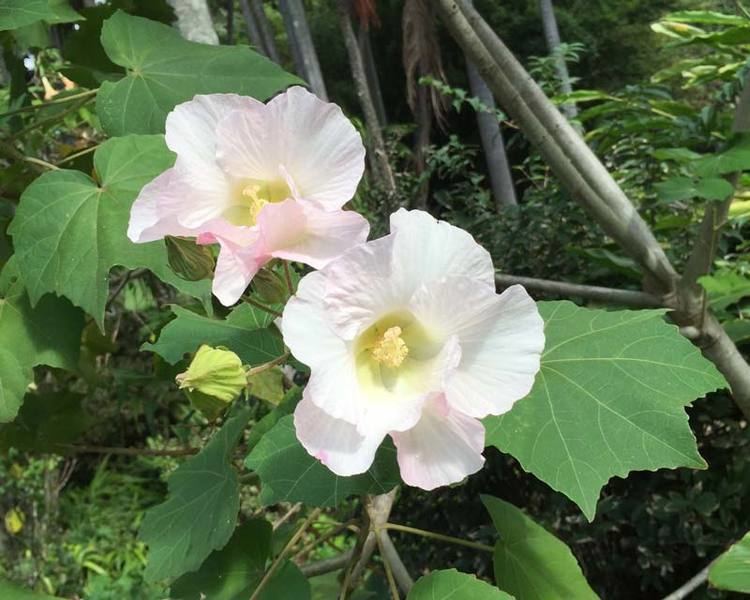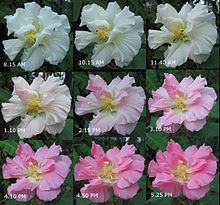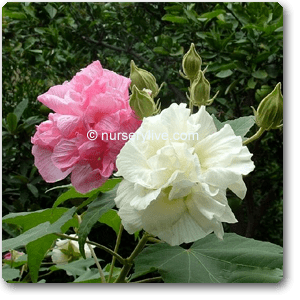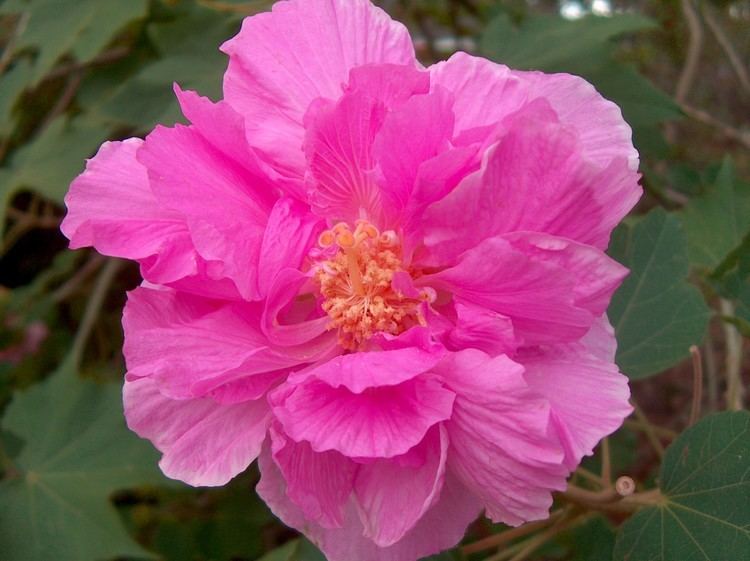Rank Species | Genus Hibiscus" Higher classification Hibiscus | |
 | ||
Similar Common Hibiscus, Hibiscus, Mallows, Shoeblackplant, Hibiscus moscheutos | ||
Hibiscus mutabilis, also known as the Confederate rose, Dixie rosemallow or the cotton rosemallow, is a plant noted for its flowers.
Contents

Confederate roses tend to be shrubby or treelike in Zones 9 and 10, though it behaves more like a perennial further north. Flowers can be double or single and are 4 to 6 inches in diameter; they open white or pink, and change to deep red by evening. The 'Rubra' variety has red flowers. Single blooming flowers are generally cup-shaped. Bloom season usually lasts from summer through fall. Propagation by cuttings root easiest in early spring, but cuttings can be taken at almost any time. When it does not freeze, the Confederate rose can reach heights of 12 to 15 feet with a woody trunk; however, a much bushier, 5 or 6 feet plant is more typical and provides more flowering. These plants have a very fast growth rate. The Confederate rose was at one time very common in the area of the Confederate States of America, which is how its common name was derived. It grows well in full sun or partial shade, and prefers rich, well-drained soil.

Hibiscus mutabilis grown from seed 2014
Uses

Leaves and flowers of H. mutabilis are emollient and cooling, and are used to treat swellings and skin infections (Dasuki, 2001). Mucilage from flowers and leaves is used by midwives to facilitate delivery during labour.
Floral colour change

Flowers are white in the morning, turning pink during noon and red in the evening of the same day. Under laboratory conditions, colour change of petals was slower than that of flowers under outdoor conditions (Wong et al., 2009). Temperature may be an important factor affecting the rate of colour change as white flowers kept in the refrigerator remain white until they are taken out to warm, whereupon they slowly turn pink (Ng, 2006).

The red flowers remain on plants for several days before they abort (Wong et al., 2009). Weight of a single detached flower was 15.6 g when white, 12.7 g when pink and 11.0 g when red. Anthocyanin content of red flowers was 3 times that of pink flowers and 8 times that of white flowers. There was a significant increase in phenolic content with colour change. Overall ranking of AOP of H. mutabilis flowers was red > pink > white.
Subramanian and Nair (1970) postulated that anthocyanins in pink and red flowers of H. mutabilis are synthesized independently since there is no reduction in phenolic content. However, Lowry (1976) suggested that anthocyanins are formed through direct conversion from flavonols as they have structural similarities.
